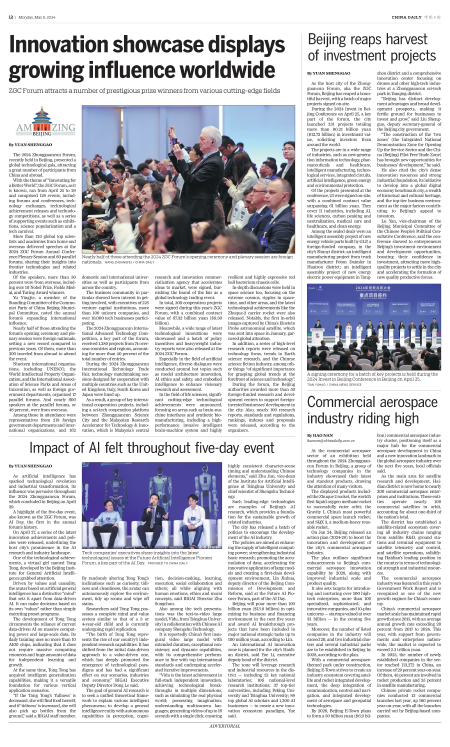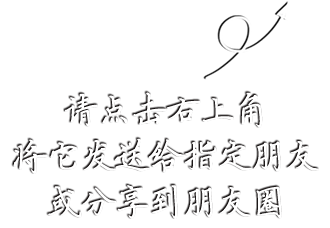At the commercial aerospace sector of an exhibition held throughout the 2024 Zhongguancun Forum in Beijing, a group of technology companies in the industry showcased their latest and standout products, drawing the attention of many visitors.
The displayed products included the Zhuque 2 rocket, the world's first liquid oxygen methane rocket to successfully enter orbit; the Gravity 1, China's most powerful commercial space launch rocket; and SQX 3, a medium-heavy reusable rocket.
On Jan 24, Beijing released an action plan (2024-28) to boost the innovation and development of the city's commercial aerospace industry.
The plan outlines significant enhancements to Beijing's commercial aerospace innovation capability by 2028, along with improved industrial scale and product quality.
It also sets targets for introducing and nurturing over 500 high-tech enterprises, more than 100 specialized, sophisticated, and innovative companies, and 10-plus unicorns — startups valued at over $1 billion — in the coming five years.
Moreover, the number of listed companies in the industry will exceed 20, and two industrial clusters and several industrial parks are to be established in Beijing by 2028, according to the plan.
With a commercial aerospace-themed park under construction, Beijing E-Town strives to create an industry ecosystem covering satellite and rocket integrated development, the deep integration of communication, control and navigation, and integrated development of aerospace and geospatial technologies.
By 2028, Beijing E-Town plans to form a 50 billion yuan ($6.9 billion) commercial aerospace industry cluster, positioning itself as a major hub for the commercial aerospace development in China and a new innovation landmark in the global aerospace industry over the next five years, local officials said.
As the main area for satellite research and development, Haidian district is now home to nearly 200 commercial aerospace enterprises and institutions. These entities operate nearly 100 commercial satellites in orbit, accounting for about one-third of the nation's total.
The district has established a satellite-related ecosystem covering all industry chains ranging from satellite R&D, ground stations and terminal equipment to satellite telemetry and control, and satellite operations, solidifying Haidian's leading position in the country in terms of technological strength and industrial resources.
The commercial aerospace industry was featured in this year's Government Work Report and is recognized as one of the new growth engines for China's economy.
China's commercial aerospace market scale has maintained rapid growth since 2015, with an average annual growth rate exceeding 20 percent from 2017 to 2024. This year, with support from governments and enterprises nationwide, the market is expected to exceed 2.3 trillion yuan.
In 2023, the number of newly established companies in the sector reached 113,272 in China, an increase of 29 percent year-on-year. Of them, 43 percent are involved in rocket production and 35 percent in satellite manufacturing.
Chinese private rocket companies conducted 13 commercial launches last year, up 160 percent year-on-year, with all the launches carried out by Beijing-based companies.
haonan@chinadaily.com.cn

